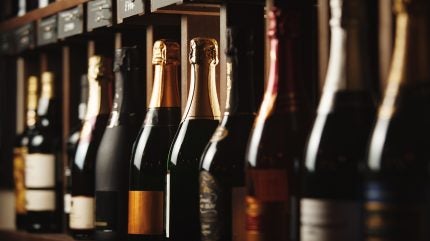
Champagne Telmont has launched what is claimed to be the “world’s first ultra-lightweight” standard champagne bottle in the US.
Launched on Earth Day 2025 (22 April), the bottle weighs 800g and makes its debut in the country with the company’s Réserve Brut.

Discover B2B Marketing That Performs
Combine business intelligence and editorial excellence to reach engaged professionals across 36 leading media platforms.
Champagne Telmont stated that this launch represents a milestone in sustainable wine packaging, cutting carbon emissions by 4% per bottle and pushing the boundaries of traditional industry practices.
It was developed in collaboration with French glass manufacturer Verallia.
According to Champagne Telmont, the typical bottle weight remained fixed at 835g for over 20 years. Previous efforts to reduce weight were rejected due to concerns over pressure durability.
However, the company added that the bottle’s design maintains both the required pressure resistance and the visual elegance associated with champagne.

US Tariffs are shifting - will you react or anticipate?
Don’t let policy changes catch you off guard. Stay proactive with real-time data and expert analysis.
By GlobalDataThe innovation can be adopted without altering current manufacturing lines or procedures.
Telmont started producing the 800g bottles with an initial 3,000 bottles in 2022. After the mandatory three-year maturation process, the bottles are ready for distribution.
Production increased to 30,000 bottles in 2023, followed by 220,000 in 2024. From 2025 onwards, all of Telmont’s bottles will come in this lighter format.
According to the company, if adopted across the sector, this bottle format could reduce annual CO₂ emissions by up to 8,000t.
Telmont stated that this innovation is not subject to any exclusivity to ensure it can benefit the widest possible audience.
The updated Réserve Brut bottles are available through select physical retailers and on Telmont’s official website.
Champagne Telmont president Ludovic du Plessis said: “Creativity and innovation must go hand in hand with responsibility.
“By adopting this ultra-lightweight bottle, we aim to redefine industry standards and contribute to a more sustainable future for champagne.”





